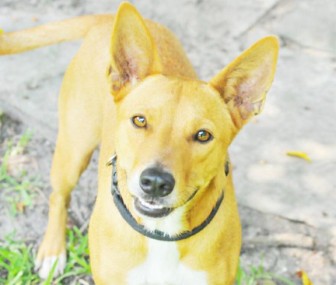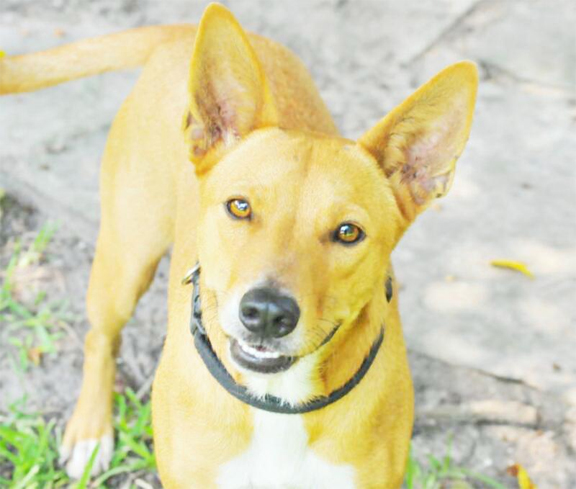If, after the successful completion of the physical sex act (called the ‘tie‘ in dogs), the bitch fails to conceive, you may be faced with an infertility problem – in either the male or the female, or both. This is especially likely to be true, if the same dogs were brought together at the correct time and mated more than once during the ‘standing‘ heat period (7th, 9th and 11th day after the first droplets of blood were seen at the commencement of the heat period. Infertility would become even more the suspicion, if the same two dogs are brought together at another (the next) occasion when she comes in heat, and then again she fails to conceive.

Fertility problems in the male
One should differentiate between a general state of infertility (because the animal is impotent) and a condition in which the animal is quite fertile, but because of a physical obstruction he/she can’t mate. Sometimes, all it takes is the snip of a scissors and the physical act of copulation can take place.
Over the years, I have found that the major cause of reduced fertility (or even infertility) in the stud (male) dog is over-use. By that I mean the excessive use of a good and proven sire (male dog) – every day for a long period with more than one female partner. This is an ever-increasing development alarmingly observed in some ‘breeding‘ establishments.

Anyway, back to the discussion on fertility problems in the male dog. Here is my advice to anyone wanting to use his or her stud dog as a commercial sire, or even if the mating is only to help a friend’s bitch get pregnant. If you use the male for 3 consecutive days, then you need to rest him for two days. In fact, if you use him (on the same bitch) on the 7th, 9th and 11th day (see above), then that would be enough of a rest period. He could then be put back in use 36-48 hours after his last mating.
Of course, if the stud dog is used daily several things can happen – all of which could impact on his fertility. For one thing over-use can lead to a low sperm count; also the viability of the sperm cells is compromised. Young and relatively immature (even weak) sperm cells will be in the ejaculate trying to swim long distances and over great hurdles to get to the female’s eggs for fertilization.
Secondly, a weakened (from sexual overwork) stud dog is more susceptible to an infection which could lead to a fever. Prolonged elevated body temperature (fever) depresses sperm formation. In fact, I should mention that long-haired dogs especially do not fare well and are less fertile during the very hot months (eg, August-October) of the year. During this period we must cool down (water hosing) the active stud.
Let it be clear that a dog weakened by a long-lasting (chronic) illness may take several weeks to regain his normal sperm count.
Paradoxically, male dogs that have not been sexually active for a long while may show low sperm counts on their first outing. Luckily, within 2 days or less, the quality of the sperm will improve.
Finally, there is one specific disease – Hypothyroidism (common in dogs) in which the thyroid hormones are in low production – that lowers the sperm count in the male dog, as well as his libido (sexual activity).
Please implement disease preventative measures (vaccinations, routine dewormings, monthly anti-heartworm medication, etc) and adopt-a-pet from the GSPCA’s Animal Clinic and Shelter at Robb Street and Orange Walk, if you have the wherewithal to care well for the animals. Do not stray your unwanted pets, take them to the GSPCA’s Clinic and Shelter instead. If you do not wish your pet to have puppies or kittens, you may exploit the GSPCA’s free spay and neutering programme. If you see anyone being cruel to an animal, or if you need any technical information, please get in touch with the Clinic and Shelter by calling 226-4237.






